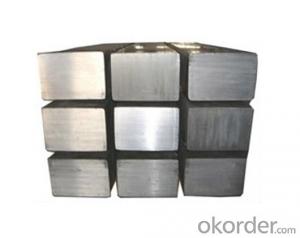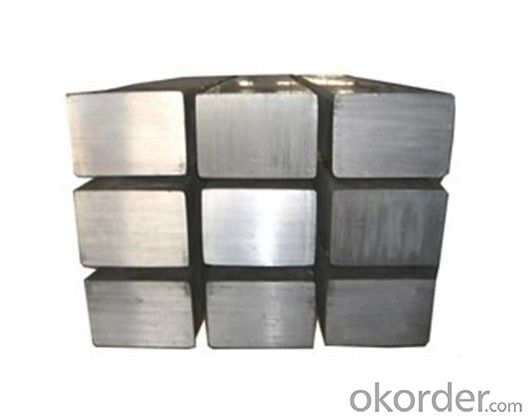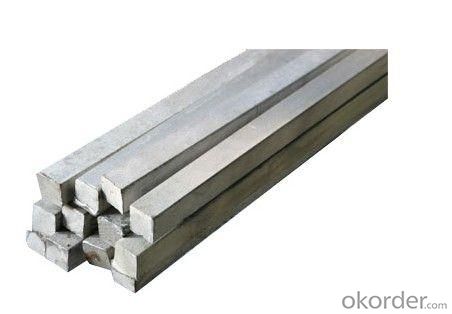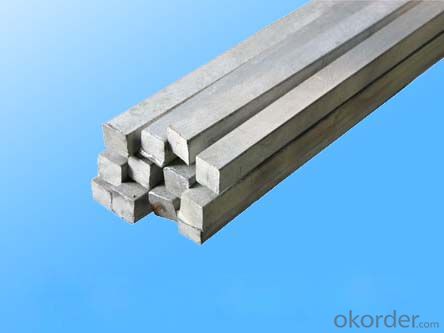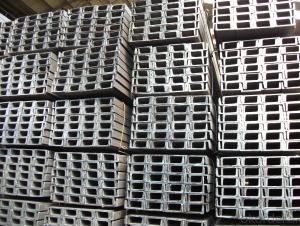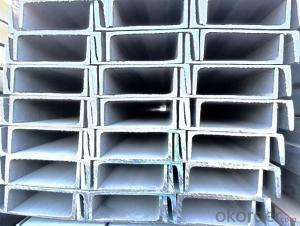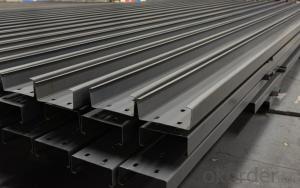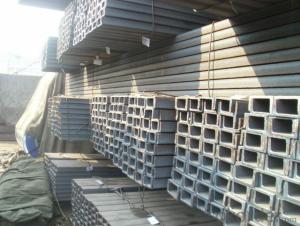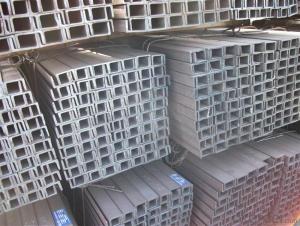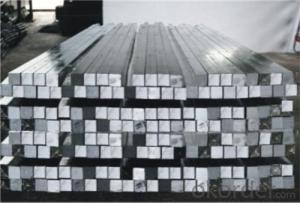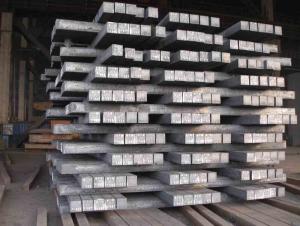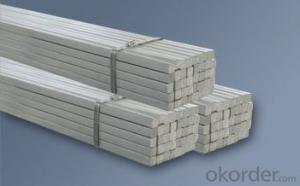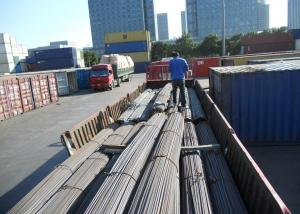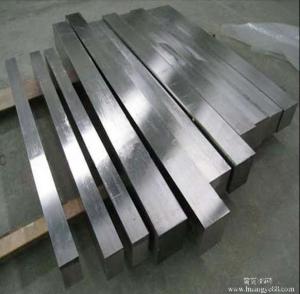JIS U Channel for construction made in China
- Loading Port:
- Tianjin
- Payment Terms:
- TT or LC
- Min Order Qty:
- 10000 m.t.
- Supply Capability:
- 10000 m.t./month
OKorder Service Pledge
OKorder Financial Service
You Might Also Like
Product Description:
OKorder is offering JIS U Channel for construction made in China at great prices with worldwide shipping. Our supplier is a world-class manufacturer of steel, with our products utilized the world over. OKorder annually supplies products to European, North American and Asian markets. We provide quotations within 24 hours of receiving an inquiry and guarantee competitive prices.
Product Applications:
JIS U Channel for construction made in China are ideal for structural applications and are widely used in the construction of buildings and bridges, and the manufacturing, petrochemical, and transportation industries.
Product Advantages:
OKorder's JIS U Channel for construction made in China are durable, strong, and resist corrosion.
Main Product Features:
· Premium quality
· Prompt delivery & seaworthy packing (30 days after receiving deposit)
· Corrosion resistance
· Can be recycled and reused
· Mill test certification
· Professional Service
· Competitive pricing
Product Specifications:
-Standard: GB,
-Grade: Q195 or equivalent.
-Chemical Composition:
Standard | Grade | Element (%) | ||||
GB | Q195 | C | Mn | S | P | Si |
0.06~0.12 | 0.25~0.50 | ≤0.050 | ≤0.045 | ≤0.30 | ||
Measures of HR Square Bar (small measures):

(Section of HR Square Bar)
-Length of a side and Theoretical weight of Square Bar.
Length of a side(mm) | Theoretical weight(kg/m) | Length of a side(mm) | Theoretical weight(kg/m) |
7 | 0.385 | 22 | 3.80 |
8 | 0.502 | 24 | 4.52 |
9 | 0.636 | 25 | 4.91 |
10 | 0.785 | 26 | 5.30 |
11 | 0.950 | 28 | 6.15 |
12 | 1.13 | 30 | 7.06 |
13 | 1.33 | 32 | 8.04 |
14 | 1.54 | 34 | 9.07 |
15 | 1.77 | 36 | 10.17 |
16 | 2.01 | 38 | 11.24 |
17 | 2.27 | 40 | 12.56 |
18 | 2.54 | 42 | 13.85 |
19 | 2.82 | 45 | 15.90 |
20 | 3.14 | 48 | 18.09 |
21 | 3.46 | 50 | 19.63 |
Notes:
1, The theoretical weights in the list, base on the density of 7.85 g/cm3.
2, Formula for theoretical weight of Square bar: (length of a side)2 * 0.00785
3, The numbers with *mean that they are not regular or we don’t offer them.
-Regular length of Square Bar:
Steel | Length of a side (mm) | Length of steel (m) |
Normal steel | < 25 | 4~10 |
> 25 | 3~9 | |
Steel of high quality | All measure | 2~6 |
Tool steel >75 | 1~6 |
Usage/Applications of HR Square Bar:
-The Square Bar is normally used as structure steel.
-Row material for other structure steel like steel angles, channels, I-beams, H-beams, etc…
Packaging & Delivery of HR Square Bar:
-Packing Detail: The products can be packed in bundles by steel wires.
-Marks: We make tag marks and color marks. The tag marks with white background and red company logo will be tied up to each bundle of the products. The information is usually including basic information of products and company and other information requested by customers. As for color marks, we will paint both ends of bundles to make sure that it will be more convenient for customers to distinguish them from other products.
-Delivery Detail: 30~45 working days after receive buyer’s T.T. or L/C.
Transportation:
-The products can be delivered by bulk vessel or by container. As for container, products with the length of 6m will be loaded in 20’ container, with 9m or 12m, in 40’ container.
-The maximum quantity of loading of container is 25 tons.
-The products are usually transported to the nearest port from the production place.
FAQ:
Q1: Why buy Materials & Equipment from OKorder.com?
A1: All products offered byOKorder.com are carefully selected from China's most reliable manufacturing enterprises. Through its ISO certifications, OKorder.com adheres to the highest standards and a commitment to supply chain safety and customer satisfaction.
Q2: How do we guarantee the quality of our products?
A2: We have established an advanced quality management system which conducts strict quality tests at every step, from raw materials to the final product. At the same time, we provide extensive follow-up service assurances as required.
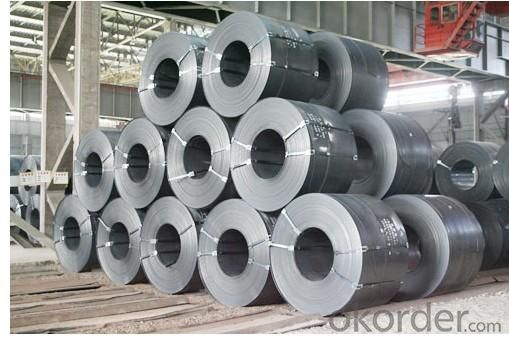
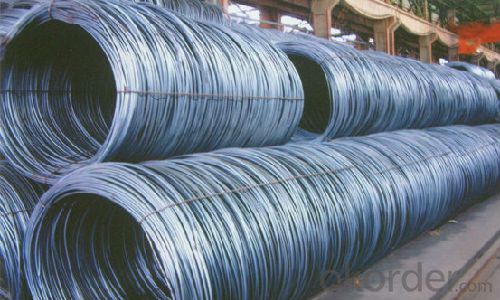
- Q: How do you use a steel square to determine the angle of a compound miter cut?
- To use a steel square to determine the angle of a compound miter cut, you would first align the square's body against the fence of the saw, with the blade of the square extending towards the direction of the cut. Then, you would adjust the square's blade until it aligns with the desired angle of the cut. Once the square is properly positioned, you can lock it in place and use it as a guide to make the compound miter cut accurately.
- Q: Can a steel square be used for checking the squareness of picture frames?
- Yes, a steel square can be used for checking the squareness of picture frames. A steel square, also known as a framing square or carpenter's square, is a versatile tool commonly used in woodworking and construction. Its 90-degree angle and straight edges make it ideal for measuring and checking right angles. When using a steel square to check the squareness of a picture frame, you can place it against the corners of the frame to ensure they are perfectly perpendicular. By aligning the edges of the square with the frame corners, any discrepancies in squareness can be easily identified and corrected. Therefore, a steel square is a reliable tool for ensuring that picture frames are properly squared.
- Q: Can a steel square be used for checking the levelness of a surface?
- No, a steel square is not typically used for checking the levelness of a surface. It is primarily used for measuring and marking right angles in woodworking and construction projects. For checking the levelness of a surface, a leveling tool such as a spirit level or laser level is more appropriate.
- Q: Can a steel square be used for checking the squareness of a window frame corner?
- Indeed, the squareness of a window frame corner can be assessed using a steel square. Carpenters and builders often rely on this tool to guarantee precise right angles. With its 90-degree angle, the steel square enables accurate measurement and verification. By positioning the steel square against the window frame corner, one can effortlessly ascertain whether it is perfectly square or necessitates adjustments. Consequently, the steel square serves as a trustworthy instrument to evaluate the squareness of a window frame corner.
- Q: How do you use a steel square to measure and mark perpendicular lines?
- Achieving precise measurements and markings for perpendicular lines can be accomplished by utilizing a steel square. To accomplish this, adhere to the following guidelines: 1. Start by situating the steel square on the desired surface or material where a perpendicular line is to be established. Position one edge of the square against the reference edge or surface. 2. Guarantee that the square is appropriately aligned, ensuring that the longer side of the square is parallel to the reference edge or surface. Verify that the square is also positioned at a 90-degree angle in relation to the reference edge. 3. Once the square is correctly aligned, firmly secure it against the surface and employ a pencil or marking tool to create a line along the square's edge. 4. Subsequently, relocate the square away from the reference edge or surface, ensuring that the 90-degree angle between the square and the reference edge is maintained. 5. Align the longer side of the square parallel to the previously marked line, and position it so that one edge of the square aligns with the line. 6. With the square securely held against the surface, utilize a pencil or marking tool to generate a second line along the square's edge. 7. The line produced by the square ought to be perpendicular to the initial reference line, forming an ideal right angle. By adhering to these instructions, it is possible to accurately measure and mark perpendicular lines with the aid of a steel square. It is crucial to ensure that the square remains aligned and firmly secured against the surface to achieve precise outcomes.
- Q: How do you choose the right size of a steel square?
- When choosing the right size of a steel square, it is crucial to consider the specific task or project at hand. The size of the steel square should be determined by factors such as the scale and precision of the work, the desired level of accuracy, and the dimensions of the materials being worked on. It is important to select a size that allows for comfortable handling and maneuverability while still providing the necessary functionality and accuracy required for the task.
- Q: What are some common techniques for using a steel square in carpentry?
- The steel square is a versatile tool widely used in carpentry for measuring, marking, and laying out angles. Here are some common techniques for using a steel square in carpentry: 1. Checking for squareness: One of the primary uses of a steel square is to check if a corner or joint is perfectly square. Place the square against the corner and verify if both edges align with the adjacent surfaces. If they do, the corner is square. 2. Determining angles: Steel squares are excellent for measuring and marking angles in carpentry. The square typically has degree marks along its blade, allowing you to accurately measure angles. For instance, if you need to cut a piece of wood at a 45-degree angle, you can use the square to mark the angle and guide your saw. 3. Transferring measurements: Steel squares can be used to transfer measurements from one surface to another. For example, if you need to mark a line parallel to an existing edge, you can place the square against the edge and draw a line along the square's blade. 4. Creating perpendicular lines: The steel square's 90-degree angle is perfect for creating perpendicular lines. By aligning the square against an edge, you can easily draw a line perpendicular to that edge. 5. Determining rafter lengths: Carpenters often use steel squares to calculate rafter lengths when building roofs. By using the square's various measurements and formulas, you can determine the length and angles required for rafters. 6. Setting up miter cuts: Steel squares are invaluable when setting up miter cuts for trim work. By using the square's angle markings, you can accurately measure and mark the desired angles for precise cuts. 7. Checking for level and plumb: Steel squares can also be used to check if something is level or plumb. By placing the square against a vertical or horizontal surface, you can verify if it is perfectly vertical or horizontal. These are just a few of the many common techniques for using a steel square in carpentry. With its versatility and accuracy, the steel square is an indispensable tool for any carpenter.
- Q: Can a steel square be used for electrical work?
- No, a steel square is not suitable for electrical work as it is primarily a carpentry tool used for measuring and marking angles. Electrical work requires specialized tools that are designed to safely handle live wires and electrical components.
- Q: Can a steel square be used for post layout and construction?
- A steel square, also referred to as a framing square or carpenter's square, proves to be an essential tool for post layout and construction tasks. Carpenters, builders, and DIY enthusiasts commonly utilize this versatile instrument for a variety of layout and construction purposes. Constructed from steel, it consists of a long arm and a shorter perpendicular arm that intersect at a perfect 90-degree angle. When it comes to post layout, a steel square serves to guarantee precise post placement by determining the correct angles and measurements. This tool aids in marking the post locations, ensuring their alignment with the desired layout and their perpendicularity. Additionally, it can be employed to assess the post's squareness once it is installed, ensuring that it stands vertically in a flawless manner. In the realm of construction, a steel square is invaluable due to its multitude of applications. It facilitates the marking and measurement of angles, enables precise 90-degree cuts, verifies squareness, and assists in the layout of various components such as rafters, stairs, and joists. Moreover, it functions as a dependable guide for cutting and marking materials like lumber, plywood, and drywall. Overall, the accuracy, versatility, and durability of a steel square make it an indispensable tool for post layout and construction endeavors. It enables meticulous measurements, guaranteeing the proper alignment and squareness of posts and other structural elements.
- Q: How do you use a steel square to create miter cuts?
- To create miter cuts using a steel square, you need to first measure and mark the desired angle on the material you want to cut. Next, position the steel square against the edge of the material, aligning the angle marked with the appropriate markings on the square. With one hand firmly holding the square, use a pencil or a scribe to mark the cut line along the edge of the square. Finally, use a saw or other cutting tool to carefully follow the marked line and make the miter cut.
Send your message to us
JIS U Channel for construction made in China
- Loading Port:
- Tianjin
- Payment Terms:
- TT or LC
- Min Order Qty:
- 10000 m.t.
- Supply Capability:
- 10000 m.t./month
OKorder Service Pledge
OKorder Financial Service
Similar products
Hot products
Hot Searches
Related keywords
